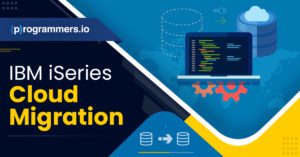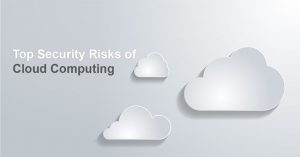With the change in tides, many organizations today are contemplating a move to the cloud. The cloud offers greater opportunity, better chances for growth and a lot more to organizations looking to leave their mark in the market for cloud technology.
Moving to the cloud is not just an intelligent choice, but is also one that has grown extremely important nowadays. The cloud is more efficient and offers amazing benefits for everyone involved. In this article we discuss the best practices you should follow for migrating to the cloud. These practices have been gathered from some of the best in the business and will help you set your mind right as to what you should do as well.
As cloud adoption and the benefits that it offers grow, global supply chain players are coming out in numbers to implement the change and incorporate it within their culture.
In this article, we take a look at some of the benefits and disadvantages of cloud computing in the modern age. Stay with us, as we take you through the world of the cloud and the feasibility it provides.
Benefits of Cloud Adoption
Companies that fail to move and adjust to cloud computing will soon see their efficiency and responsiveness fall. Cloud computing is in fact on the radar for most supply chain executives today and, sooner or later, will give you the competitive advantage you’re looking for.
Some of the benefits of cloud adoption include:
- Cost Effective: The cloud really is cost effective. By adopting cloud computing, organizations can limit administrative expenses of monitoring data from the supply chain. When we talk about the data revolution and the extraction of sense from data generated across the supply chain, we’re possibly talking of thousands of terabytes of data generated on a daily or periodical basis. The alternative to cloud computing is the introduction of an on-site data center, which besides the initial costs requires consistent cooling and heating. You can use the money you save into adding efficiency to your supply chain and improving key processes.
- On Demand Access: Cloud adoption can provide you with on-demand access to your data and resources whenever and wherever you want. Resources placed on the cloud can easily be stored, recovered, retrieved or processed within just a couple of clicks. Users of the cloud can now access data on the cloud on the go through any device of their choice, from any corner of the world, as long as they have a valid connection to the internet.
- A Wide Array of Applications: Cloud computing offers a number of applications that come under the following three services:
- Software as a Service (SaaS)
- Platform as a Service (PaaS)
- Infrastructure as a Service (IaaS)
- Adaptability: Cloud computing offers supply chains the kind of adaptability they are looking for. A cloud computing service can adapt to almost any change in patterns and deliver consistent results. An organization can track and store data from all stakeholders involved in the supply chain process to achieve the results they require.
- Greater Visibility: One of the greatest benefits expected as a result of the data revolution of today is greater visibility. Most businesses are unable to recognize problems and let them slip away without taking any concrete measures to stop the damage before it is too late. Greater visibility will also enable organizations to respond in a better way to increased demand and achieve more profitable and leaner operations through the creation of sufficient goods.
Disadvantages of Cloud Adoption
While the cloud has generated positive rapport overall, all that glitters is not gold. There are a few security threats involved as well with the cloud, including:
- Technical Issues: Moving to the cloud will bring some technical issues to the fore, especially if your organization isn’t well equipped with managing the cloud. These tech issues can be mitigated through proper planning and implementation.
- Security Threat: The cloud does have many security measures, but there are security threats. You should have a concrete security policy to safeguard your data and maintain a backup if needed. Do not depend entirely on the cloud.
- Lack of Support: New cloud providers fail to provide proper support, which is why organizations are recommended to try out tested providers in the form of AWS and others of the nature.
Read: Security Risks of Cloud Computation
How Does Cloud Adoption Work?
Supply chain executives can lead their transition to the cloud with an eye on the following critical steps:
- Assessment: All IT decision-makers and executives need to assess the challenges and opportunities of moving to the cloud. In addition to taking notes and inspiration from popular vendors/business leaders, organizations should consider the financial challenges of the process. A move to the cloud should only be contemplated after a full understanding of these challenges and the way they impact productivity.
- Planning: Once organizations perform their research and run their assessment, they have to move toward the more complex task of employing a cloud computing strategy in their market. This is where an organization should decide between public, private and hybrid clouds.
- Adoption: The adoption phase is the trickiest of the lot and deals with risk mitigation and performance enhancement strategies. Managers should develop an enhanced understanding of their data stores, servers and software for future scalability and reiteration of the strategy.
- Optimization: IT departments should meet regularly with executive teams to form and sustain a long-term strategy. The new and improved solutions created here can go a long way in optimizing performance.
You are now well-equipped to implement the cloud software in your organization, especially after recognizing the benefits in play. You can take the knowledge you have gathered forward by learning more about the cloud and implementation techniques.




